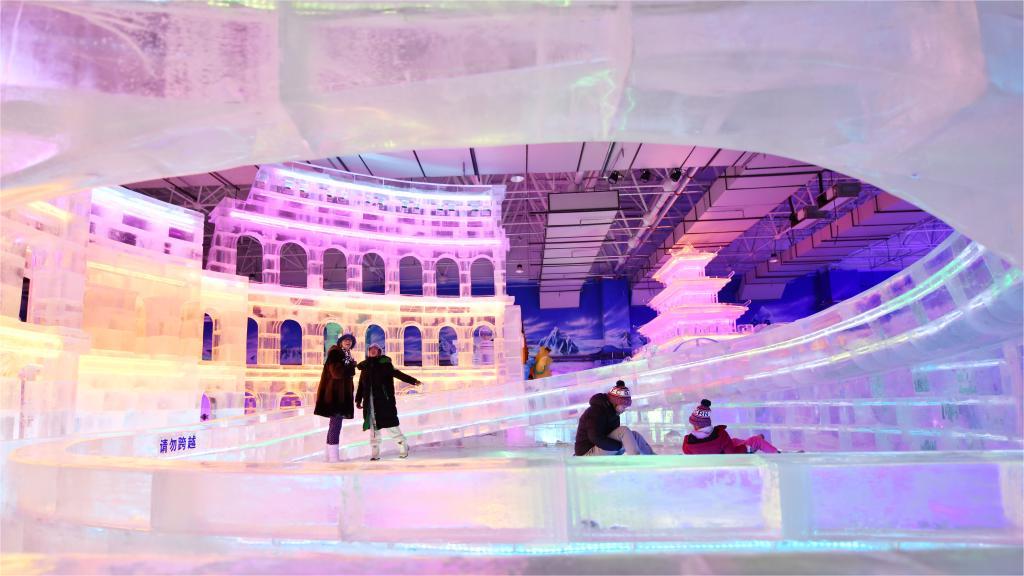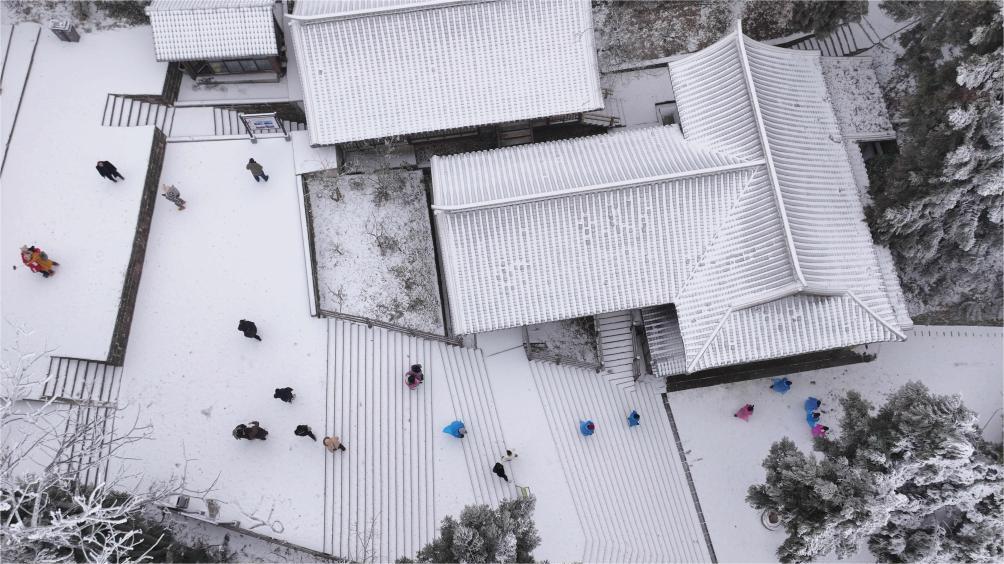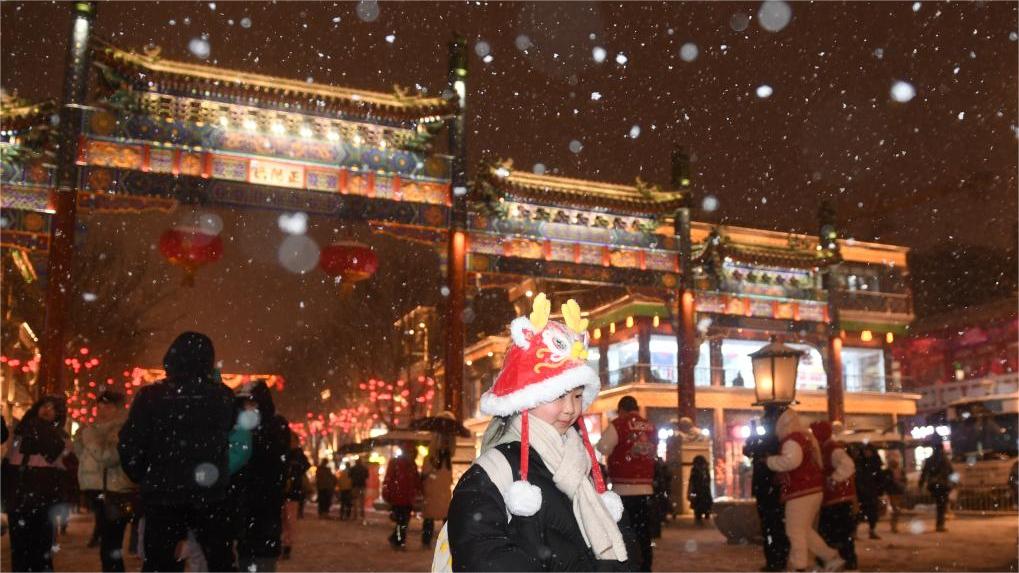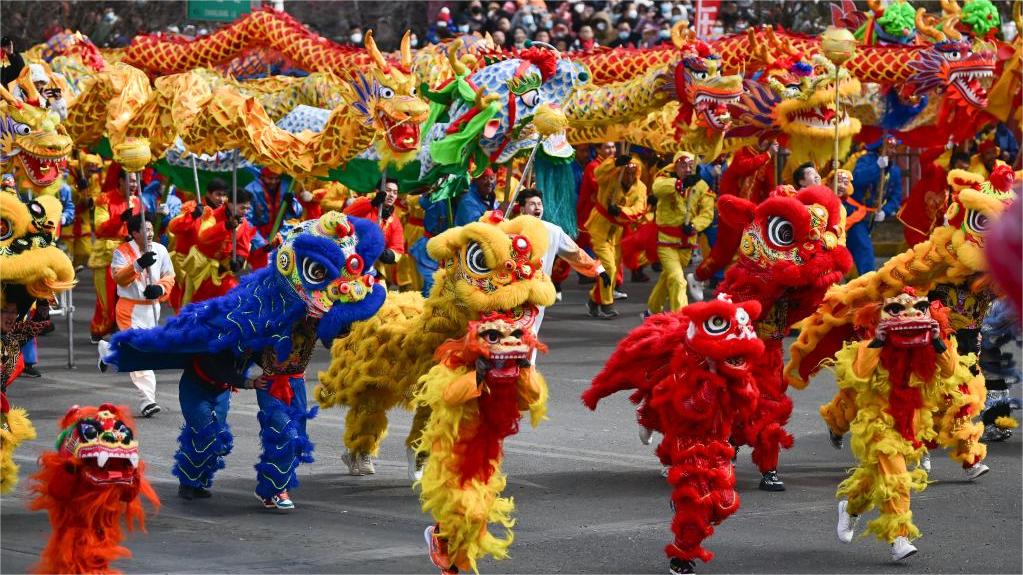Tourist industries tap into lures of culture
BEIJING, Feb. 26 (Xinhua) -- Chinese people have always advocated combining traveling with learning knowledge since ancient times, as a traditional proverb says that one needs to not only read 10,000 books, but also travel 10,000 miles to know the world around us.
With its fine traditional culture and diverse folk cultures in its vast land, China's efforts to encourage positive interplay between culture and tourism in recent years have promoted the deeper integration of the two sectors in many places, which garnered tons of tourists during the past traveling season.
Statistics from the Ministry of Culture and Tourism revealed that during this year's Spring Festival holiday, Chinese people made 474 million domestic tourist trips and spent more than 632.6 billion yuan (about 87.9 billion U.S. dollars), both of which increased from 2019.
Travels to historical sites and museums and tours featuring local distinctive culture and tradition were sought-after by eager tourists this holiday.
TOURISM COMBINED WITH TRADITIONAL CULTURE
Tourism has become a popular way for many Chinese to understand and appreciate the culture of the nation.
On the first day of the Year of the Dragon, the Sanxingdui Museum of southwest China's Sichuan Province welcomed a large number of visitors during its official operating hours.
Vice curator Yu Jian and his co-workers were sitting at their work tables carefully restoring relics. Visitors not only viewed the newly unearthed relics but also witnessed the restoration process through a glass wall.
Sanxingdui Museum has been exploring ways to present the most precious heritage of the Chinese civilization in a lively way, said Yu, and in December 2021, the museum introduced this innovative measure.
This restoration workshop like an "open kitchen" is well received by tourists, said Yu.
During the Spring Festival holiday, the museum attracted 193,300 visitors and participated in the cultural activities commemorating the Year of the Dragon celebrations in ancient Shu Kingdom times.
TOURISM HIGHLIGHTING FOLK CULTURE
Du Jin, an Oroqen young man from north China's Inner Mongolia Autonomous Region, was busy presenting local ice-and-snow folk culture featuring the ethnic minority group to tourists during the Spring Festival holiday.
"In addition to traditional ethnic sports event, diverse winter activities were launched this year to cater to more tourists, enriching their experience of ice-and-snow fun," Du said, who is a tourism referrer of his hometown Hulun Buir, a well-known tourism city in Inner Mongolia.
China saw a nationwide ice-and-snow tourism fervor this winter holiday, with tourists flocking to snow-capped cities in north China such as Harbin and Hulun Buir. The tourism frenzy in Hulun Buir shined with a flavor of ethnic minority culture.
In January, in a bid to share his ethnic culture, Du visited Harbin where he gave a traditional hat decorated with roe deer horn as a gift to a little girl, who later donated it to the China (Harbin) Forest Museum.
The fancy story went viral online, luring more than 6,000 tourists to visit the museum in three days.
Taking advantage of China's 14th National Winter Games that recently opened in Inner Mongolia and is scheduled to conclude on Tuesday, Hulun Buir also hosted a series of cultural and tourist activities featuring ethnic minorities.
During the eight-day Spring Festival holiday, Hulun Buir received 1.1 million tourist visits that raked in about 766 million yuan in revenue, 11 times that of the same period last year, according to Yang Hong, deputy head of the municipal administration of culture, tourism, radio and television.
Photos
Related Stories
- Top China travel destination makes bid for U.S. tourists
- China's thriving outbound tourism contributes to global economic recovery
- Litang in SW China's Sichuan province finds secrets to tourism
- China sees booming domestic tourism, recovering int'l travels during Spring Festival holiday
- Ice, snow tourism thrives in China
Copyright © 2024 People's Daily Online. All Rights Reserved.









